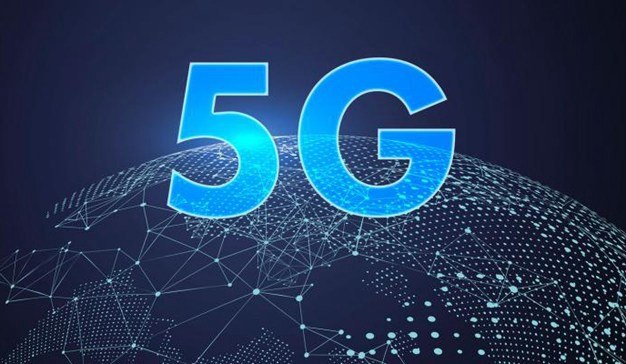How India Is Adopting 5G: Latest Rollout Updates and Impact
India has taken a major leap forward with the rollout of 5G technology, marking a new era in digital connectivity and innovation. After years of anticipation, testing, and infrastructure planning, 5G services are finally becoming a reality across various parts of the country. This article takes a close look at how India is adopting 5G, where the rollout currently stands, which companies are leading the charge, and what the broader impact is on the Indian economy, businesses, and everyday users.
The Road to 5G in India
The journey to 5G in India began years ago with spectrum trials and pilot projects. In 2022, the Department of Telecommunications (DoT) conducted successful 5G auctions, allocating spectrum to major telecom players. The actual launch happened in October 2022 when the Prime Minister officially inaugurated 5G services during the India Mobile Congress.
Since then, the major telecom operators—Reliance Jio and Bharti Airtel—have been expanding their 5G coverage aggressively. Jio, in particular, pledged to roll out 5G across the entire country by the end of 2023 using its standalone 5G network. Airtel, on the other hand, is deploying a non-standalone 5G network, leveraging existing 4G infrastructure for a quicker rollout.
Where Does the 5G Rollout Stand Now?
As of mid-2025, 5G services are available in over 8,000 towns and cities across India. The coverage has extended beyond just metro cities like Delhi, Mumbai, Bengaluru, and Hyderabad. Tier-2 and Tier-3 cities such as Lucknow, Bhopal, Indore, Guwahati, and Vijayawada are also experiencing 5G deployment.
According to reports, over 250 million mobile users in India are now using 5G-capable devices, and more than 150 million are actively connected to 5G networks. This massive adoption is being driven by affordable 5G smartphones, competitive telecom plans, and increased consumer awareness.
Who Are the Key Players in India’s 5G Rollout?
Three major telecom players are leading the 5G revolution in India:
Reliance Jio
Jio has adopted a standalone (SA) 5G approach, which means it is not relying on existing 4G infrastructure. This allows for better speed, lower latency, and more advanced applications. Jio’s True 5G network now covers nearly 97 percent of India’s urban population, and the company claims to offer speeds up to 1 Gbps in many locations.
Bharti Airtel
Airtel has taken the non-standalone (NSA) route, combining 5G with its current 4G backbone. While this approach is slightly less advanced than Jio’s SA model, it allows for a quicker rollout. Airtel’s 5G Plus services are now active in over 5000 cities and towns.
Vodafone Idea (Vi)
Vi is yet to officially launch its 5G services across the country. The company has conducted successful 5G trials but is facing financial and infrastructure hurdles. However, Vi has assured users that it will begin commercial rollout once its network is fully upgraded.
Government Support and Policy Initiatives
The Indian government has played a crucial role in ensuring the rapid adoption of 5G. The reduction in spectrum usage charges, the introduction of Production Linked Incentive (PLI) schemes for telecom equipment manufacturing, and investment in indigenous technology have all contributed to a more favorable ecosystem.
India’s push for Atmanirbhar Bharat (Self-Reliant India) has also encouraged domestic development of 5G infrastructure. Companies like Tejas Networks and organizations like C-DOT (Centre for Development of Telematics) are actively working on building indigenous 5G technology, reducing reliance on foreign vendors.
The Economic and Social Impact of 5G in India
The impact of 5G on India’s economy and society is expected to be massive. Experts estimate that 5G will contribute more than $450 billion to the Indian economy by 2040. Here’s how:
Boost to Startups and Innovation
5G will power technologies like IoT, AI, robotics, and cloud computing. Startups in sectors such as health tech, edtech, agritech, and smart infrastructure are expected to thrive in this high-speed, low-latency environment. Many Indian startups are already developing 5G-ready solutions aimed at global markets.
Revolutionizing Healthcare and Education
With 5G, remote healthcare becomes much more efficient. Real-time consultation, remote surgeries through robotic arms, and telemedicine will become mainstream. In education, 5G will make immersive learning possible through augmented and virtual reality, giving rural students access to the same quality of content as those in cities.
Enhancing Urban Infrastructure
Smart city initiatives will get a significant boost from 5G. Intelligent traffic systems, waste management, surveillance, and public safety can be transformed with real-time data analytics. Cities like Pune, Surat, and Ahmedabad are already piloting smart infrastructure projects using 5G.
Industrial and Agricultural Applications
Factories are turning to smart automation using 5G-powered sensors and robotics. In agriculture, 5G-enabled drones, soil sensors, and weather monitoring systems are improving yields and reducing risks. These technologies are being adopted by startups and supported by government pilot programs.
Challenges on the Road
While the progress is impressive, the journey to full-scale 5G adoption in India is not without challenges.
Infrastructure Gaps
5G requires a dense network of small cells and fiber backhaul. Rural areas and low-income regions still lack adequate digital infrastructure. Bridging this digital divide remains a major challenge for both the government and telecom operators.
Cost of Devices
Although 5G smartphones have become more affordable, a large portion of the population still uses 4G devices. Upgrading to 5G-ready phones may take time, especially in economically weaker sections.
Spectrum and Regulatory Issues
Telecom operators have requested further reforms in spectrum pricing and network sharing to make 5G deployment more economically viable. The government’s policy response in this area will be critical for the long-term success of 5G.
The Road Ahead
India is moving swiftly in its adoption of 5G, and the future looks promising. With strong public-private collaboration, technological innovation, and policy support, India is poised to become one of the largest 5G markets in the world. As the country expands its digital infrastructure and 5G reaches deeper into the heartlands, it will unlock new opportunities for growth, education, employment, and innovation.





